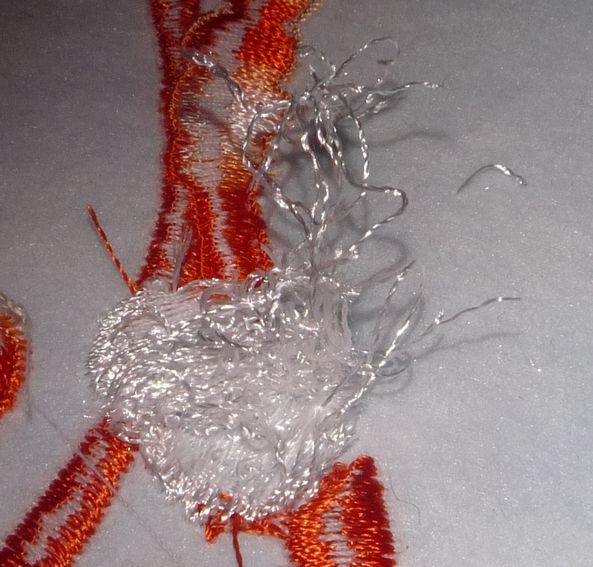Original text by: Marina Belova
Today I'll tell you what is the 'bird nesting' in machine embroidery and how to avoid it.
'Birds nest' is a thick wad of thread (knot) that appears on the wrong side of the fabric in the course of embroidery. It is a cluster of upper and lower shuttle threads intertwined with each other.

I can tell from experience that the machine does not usually stop right after the beginning of the tangling process. It often happens that this knot is sucked into the hole in the throat plate together with the fabric. And then the best you can hope for is that the fabric won't tear up and that the item won't get unhooped. But the needles often break when trying to go through this wad of thread, wherefore the potential risk of damaging the item increases.
5 reasons for 'birds nests' appearance
- Incorrect setting of the thread: either upper or lower (bobbin) thread or both.
- The machine was threaded incorrectly. For example, the bobbin thread is tight and the upper is loose. In my opinion, this is the most likely reason of all.
- The fabric was hooped too loosely.
- In commercial machines the cutting mechanism sometimes malfunctions and the shuttle may not be properly adjusted.
- Design imperfections — too much short stitches with too little space between them.
Ways of preventing of the 'birds nesting' occurrence
- Pay attention to how the embroidery process goes. Usually when an embroidery trouble is about to begin, the machine makes a different sound. If you pay attention to the embroidery process, you can stop the machine at the right moment, carefully lift the hoop and peek at the wrong side, in order to see if there aren't any knots.
- Adjust the thread tension.
- Learn to hoop in the right way.
- Supervise every step in the embroidery software before starting the embroidery: remove the short (under 1 mm) stitches.
- If the 'birds nest' has appeared anyway, you should carefully remove the knot. How to remove 'bird nesting'? There are no ready answers for that question. Usually I start from cutting the threads under the throat plate. Then I try to reduce the 'nest' in size using a pair of tweezers. Often I have to rip off the embroidery on the right side of the fabric, pulling 1 or 2 threads from the knot at a time. You should always act according to the situation. It does not require haste and fuss.
What if a hole had appeared in the item? Then you need to repair it.
For example, I use stretch fabrics in my work as the rule, like a polyester net. That's why I simply sew or tie up the opening it and embroider the element that was botched. It usually comes out good.
On the internet I've read some recommendations on repairing holes in common fabrics: they suggest covering the hole with a piece of a water soluble film or an organza. And then to proceed with the embroidery. But I didn't try this method.
Edited by Irina



There are no reviews to display.